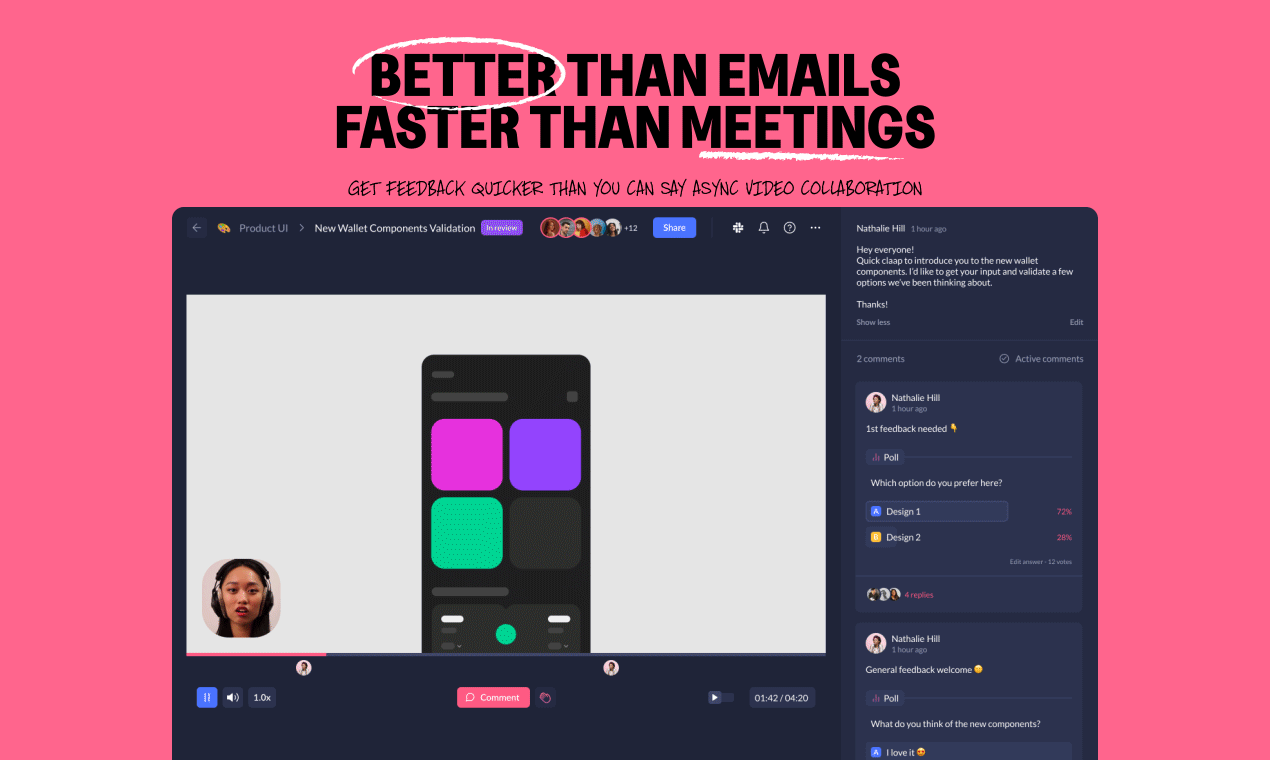Meet Claap, a French startup that has been working on a way to collaborate more efficiently as a distributed team. Claap is officially launching its product today.
Instead of relying exclusively on a mix of written memos and Zoom calls, Claap lets you share and receive quick videos with other teammates so that everyone can understand more quickly what you’re talking about and provide feedback.
“Six years ago, I joined 360Learning. Back then, we had a no-meeting policy. We were around 20 people and I could see what it meant to build an asynchronous company culture — but also its limits,” co-founder Pierre Touzeau told me.
And he still believes that async works well for some companies. He named Alan and 360Learning as companies where it can work because teams are “a bit geeky”.
The basis of async work is written communications. A lot of teams rely on Slack for informal chat, a mix of Notion and Google Docs for important memos and emails for company-wide announcements. “But at some point, people will say ‘let’s talk about it,’” Touzeau said.
Claap users interact with the product through a browser extension. From this extension, you can record what’s happening on your screen. It’ll also record your face in a tiny rounded bubble in a corner. It looks a bit like Loom, another quick video recording tool.

Image Credits: Claap
After that, people will receive your video and open it in a browser window. From there, recipients can annotate the video. At any point in time, you can pause the video, draw a square on a part of the screen and add a comment.
This page becomes a conversation. You can reply to a comment, @-mention other people and quickly jump through all highlights. Even months later, someone can still open a Claap page and see how people decided to go in one direction instead of another.
Finally, Claap content can be added to your knowledge base and become part of your ongoing documentation. For instance, some teams use it with Jira, Trello or Confluence.
Claap can be particularly useful for cross-team alignment. If you’ve been through a scaling phase at a startup, it can be hard to keep up with what other teams have been up to. These quick interactions can help various teams stay connected.
Product, design and marketing teams tend to start working with Claap first. In the best case scenario, companies then start using it more broadly after a while.
The startup first started onboarding new clients in July 2021. Overall, 2,500 to 3,000 people have interacted with the product so far. Some clients include Qonto, Kavak, Revolut, Libeo and OpenClassrooms.
When it started, the company raise $3 million in pre-seed from Headline, LocalGlobe and several business angels, such as Mathilde Collin, Tony Jamous, Roxanne Varza, Matt Robinson and Chris Herd.
Just like Slack, the company relies on a freemium model. You can start using the product for free, but you have to pay a subscription if you want to search in your Claap archive and find old videos.
I asked Pierre Touzeau whether Claap had a no-meeting policy. “I changed my mind a bit on no-meeting policies,” he told me. “There are some things that work well with meetings, such as human interactions and the ability to think about a solution together, two or three persons at a time. We are mostly async first, but we still hold live meetings because we have a full remote team.”
“If you don’t do that when you’re working remotely, you become a bit crazy,” he added. Of course, Claap also relies heavily on Claap to work on Claap.

